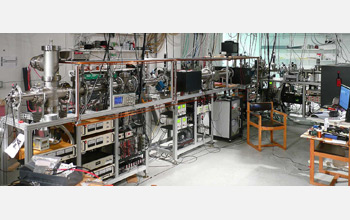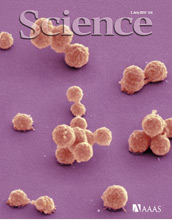All Images
News Release 10-111
A Star Is Born ... But How?
Columbia researchers reveal the simple, key chemical formula enabling the formation of early stars
This material is available primarily for archival purposes. Telephone numbers or other contact information may be out of date; please see current contact information at media contacts.

This is the apparatus used by researchers in the lab to simulate the chemistry of the early universe (not your typical telescope).
Credit: Daniel Wolf Savin, Columbia University
Download the high-resolution JPG version of the image. (223 KB)
Use your mouse to right-click (Mac users may need to Ctrl-click) the link above and choose the option that will save the file or target to your computer.
Research Scientist Daniel Wolf Savin of Columbia University's Astrophysics Laboratory describes a new discovery (which is also detailed in the July 2 issue of the journal Science) on the underlying chemical formula and reaction of early star formation the June 30, 2010 Webcast with NSF's Lisa-Joy Zgorski.
Credit: Columbia/National Science Foundation

This research is detailed in "Experimental Results for H2 Formation from H- and H and Implications for First Star Formation," published in the July 2, 2010 edition of the journal Science.
Credit: Science / AAAS
Download the high-resolution JPG version of the image. (984 KB)
Use your mouse to right-click (Mac users may need to Ctrl-click) the link above and choose the option that will save the file or target to your computer.


